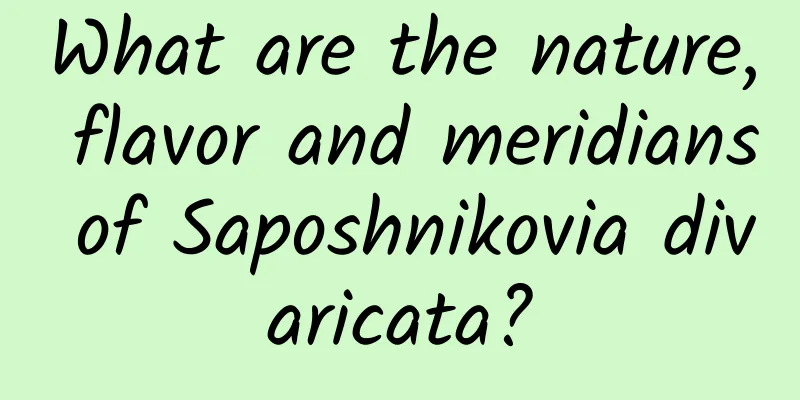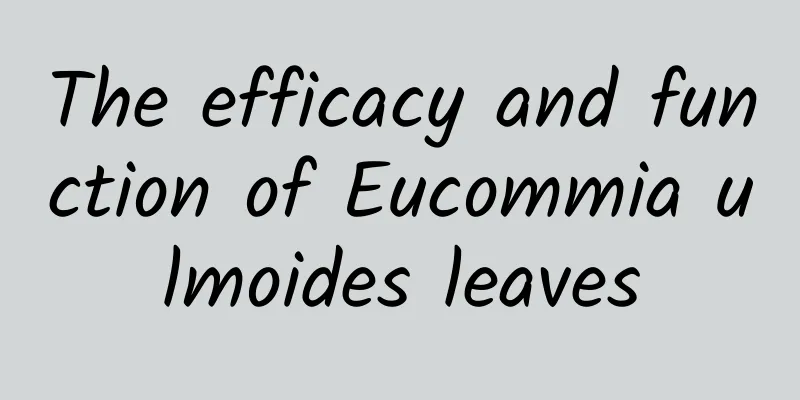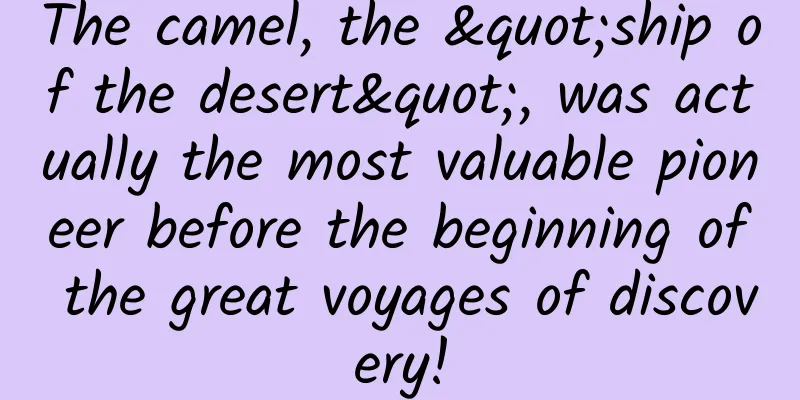What are the nature, flavor and meridians of Saposhnikovia divaricata?

|
In our country, there are many Chinese medicinal materials, and each of them can exert certain therapeutic effects. Of course, this is also based on the premise of correct use. However, Chinese medicine is also medicine, so there are still some taboos on how to use it in daily life. If you really don’t know how, ask a doctor. This can help you avoid detours and mistakes. So, what are the properties and meridians of Fangfeng? Fangfeng, the name of a traditional Chinese medicine. Also known as Tongyun, Huiyun, Huicao, Baizhi and Baizhong. It is the name of a medicinal herb, a perennial herb that prefers a cool climate, is cold-resistant and drought-resistant. It is mainly produced in Hebei, Heilongjiang, Sichuan, Inner Mongolia and other places. The roots of Saposhnikovia divaricata can be used raw. It tastes spicy and sweet, and is slightly warm in nature. It has the effects of dispelling wind and relieving exterior symptoms, eliminating dampness and relieving pain, and stopping convulsions. Medicinal Part The root of the Umbelliferae plant. Flavor It tastes spicy and sweet, and is slightly warm in nature. Meridians It enters the bladder, lung, spleen and liver meridians. effect Dispel wind and relieve exterior symptoms, eliminate dampness, relieve pain and stop convulsions. Indications It is used for external symptoms, pruritus caused by urticaria, rheumatic pain, tetanus, and spleen deficiency and dampness. Related Combinations 1. To treat all eye diseases: 3g of Rhizoma Rugosae (without oil), 6g each of Licorice and Saposhnikovia divaricata, 5g of Coptis chinensis. Boil the three ingredients to get a thick juice, then add Rhizoma Rugosae paste and apply it daily. (Sun's "Collected Effective Prescriptions") 2. For bone steaming and fever and all kinds of fever due to deficiency and fatigue, and fever after a serious illness, use Dixian Powder: 2 liang of Rehmannia root bark, 1 liang of Saposhnikovia divaricata, and 0.5 liang of licorice (roasted). Use five cents each time, add five slices of ginger, and decoct in water. (Ji Sheng Fang) 3. Difficult urination: Three-ingredient Mufangji Decoction: use 2 liang each of Mufangji, Saposhnikovia divaricata, and Sunflower Seed. Chew. Boil five liters of water until two and a half liters remain, divided into three doses. (Qianjin Fang) Dosage For internal use: decoction, 5-10 grams. For external use: take appropriate amount and decoct in water for fumigation and washing. Taboo It should not be used by those with yin-blood deficiency or wind-induced fever; it should be used with caution by those with blood deficiency, convulsions, or yin deficiency and hyperactivity of fire. Preparation method Remove the remaining stems, soak them in water, remove them, moisten them thoroughly, slice them, and dry them in the sun. Physiological characteristics Saposhnikovia divaricata is a perennial herb, 30-2000px tall. The roots are thick, oblong, branched, light yellow laurel color, obliquely ascending, nearly the same length as the main stem, and have fine ridges. The flowering period is August-September, and the fruiting period is September-October. It likes a cool climate and is cold-resistant and drought-resistant. It is suitable to be planted in sandy loam with plenty of sunlight, deep soil, looseness, fertility and good drainage. It is not suitable to be planted in acidic and heavy clay soil. |
<<: What should not be eaten when taking tonic Chinese medicine
>>: What are the differences between Cornus officinalis and Evodia rutaecarpa?
Recommend
The efficacy and function of Aijiaonan
Everyone is familiar with Aijiaonan, of course so...
These inconspicuous little particles at home are actually insect eggs? !
appendix: References: Source: A scholar...
"White light" suddenly appeared in many places in Henan. What is it?
On November 29, a piece of news about a "whi...
What kind of bird is the "jiu" in "guanguanjujiu" in "The Book of Songs"?
Wang Chenxu Most of us have read “Guangguanjujiu”...
Be careful, a family of three went to the hospital after eating overnight watermelon! There is a substance in watermelon that is higher than that in tomatoes?
Recently, in Xi'an, Shaanxi, the news #A fami...
If you have heel pain, don’t just bear with it!
Author: Tang Qin, Deputy Secretary-General of the...
This "fever-reducing magic medicine" has been cancelled by the Food and Drug Administration! It has been banned in many countries before..
On November 12, the State Drug Administration iss...
What should I do if ginseng is moldy?
Food is most likely to become moldy in hot or hum...
What are the benefits of drinking honeysuckle in water?
Honeysuckle is a common Chinese medicine. It not ...
What Chinese medicine can dredge breast
Traditional Chinese medicine can be used to dredg...
High-pressure water cannot reach the top, so people cannot live above the 30th floor? How to put out fire and escape from high-rise buildings?
Fire, this word sounds far away from us, but it i...
Fiber-optic timing makes time transmission more "hardcore"! How can high-precision time be applied in the future?
Science Times reporter epic The sun shines on the...
The secret before the shit! This time we opened a box of 38 million-year-old poops
The Earth has existed for 4.6 billion years, and ...
The efficacy and function of dry water daffodil root
As the pressure of modern life increases, more an...
What are the differences between Cistanche deserticola and Cistanche wine?
Cistanche deserticola is not only a very precious...









